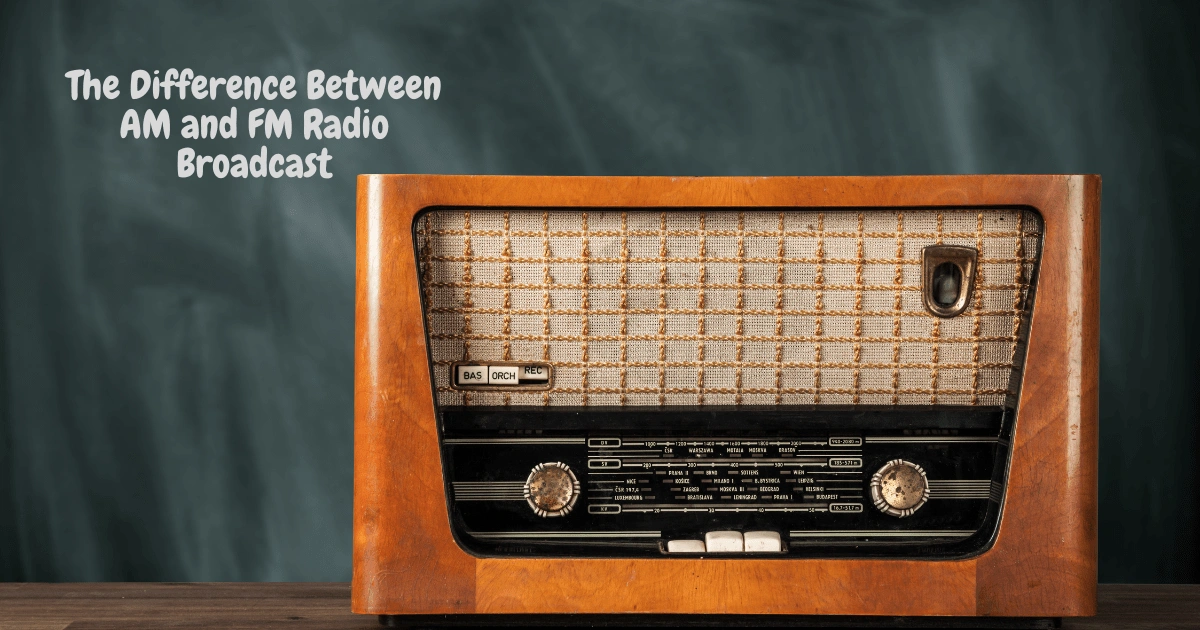Get in touch and know the difference between AM and FM radio broadcasts that changed the world of human communication and entertainment for centuries!
Radio, how come a small device can define the whole generation of people. Although the golden age of radio may have passed, it’s shocking that many people still choose this form of entertainment.
With a long and winding journey that started as early as 1880’s, many people still hold the radio as one of nostalgic charms that sticks in their head.
Also Read
So, whether you’re tuning in for news, sport, music or radio shows, knowing the difference between AM and FM radio broadcasts can bring back tons of memories in your head!
So let’s tune in for the difference between AM and FM Radio Broadcast!
Table of Contents
The Difference Between AM and FM

The main difference between AM and FM lies in how they modulate although both transmit the information in the form of electromagnetic waves.
AM works by modulating the amplitude of the signal so the strength of the carrier wave is varied in accordance with the audio signal. This can cause a variety in amplitude, causing the loud sounds a larger amplitude and vice versa.
While AM works by modulating the amplitude of the signal, FM works by varying the frequency of the wave while keeping the amplitude constant, the result of which making FM radio having a better static than AM.

Here are the result of said differences:
- Sound Quality: AM has a much poorer sound quality compared with FM. FM is also less susceptible to interference from electrical signals that can cause static in AM since FM uses frequency variations to carry the information rather than the amplitude that AM uses.
- Range: While having a much poorer sound quality compared with FM, AM has an advantage of which its radio signals travel farther due to their lover frequency range. It’s because AM waves can bounce off layers of the atmosphere, thus extending its reach. While on the other hand FM signals travel in a more straight line due to their higher frequency range.
Pros and Cons of FM vs. AM

The said differences also come with some pros and cons, both with the AM or FM radio broadcast.
Since AM focuses on the amplitude of the wave, the AM signal is less affected by disruptions from electronic devices compared with FM radio.
AM also uses a much simpler technology which makes it easier to detect with simpler equipment even if the signal is not very strong.
But even though the AM is much simpler and has a wider range, AM also has a major disadvantage over FM, one of them is that the AM signal is affected more by electrical storms and other radio frequency interference.
Like we said before, the main advantage of FM is its superior sound quality produced compared to AM that has a more static and lo-fi sound quality.
But having a better sound quality also comes with a cost, since the FM signal is more local and cannot be transmitted over long distances.
Other than that the more straight signal makes FM much harder to bend around tall buildings or land masses that can cause limited coverage of FM.
It’s also worth noting that FM radio signal requires a far more complicated receiver and transmitter than that of AM signal.
So there are the differences between AM and FM radio broadcasts that you should know!
Either it’s FM or AM radio broadcasts, both of them are still strictly regulated in Indonesia according to the Ministry of Communication in Indonesia, go check type approval certification to know more about this, believe me it’s a good stuff!
While radio is not commonly used anymore these days, its uses are still crucial to some industries especially for communication purposes.
But let’s cover those up in the upcoming article!


















